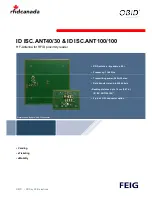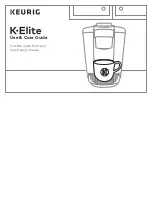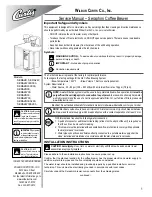
Model LFMR6
Installation, Operation, and Maintenance
File: LFMR6-IOM.doc
4
Rev:
2/22/08
Receiving
The shipment should be thoroughly inspected as
soon as it is received. The signed bill of lading is
acknowledgement by the carrier of receipt in good
condition of shipment covered by our invoice.
If any of the goods called for on this bill of lading
are shorted or damaged, do not accept them until
the carrier makes a notation on the freight bill of
the shorted or damaged goods. Do this for your
own protection.
NOTIFY
Challenger Lifts
AT ONCE if any
hidden loss or damage is discovered after receipt
IT IS DIFFICULT TO COLLECT FOR LOSS OR
DAMAGE AFTER YOU HAVE GIVEN THE
CARRIER A CLEAR RECEIPT.
File your claim with
Challenger Lifts
promptly.
Support your claim with copies of the bill of lading,
freight bill, and photographs, if available.
Flooring
Be certain you have the proper concrete floor to
properly handle the loaded lift. Floor should be in
generally good condition with no large cracks,
spalling or deterioration. Minimum requirements for
concrete are 4 inches minimum depth, with steel
reinforcement per local commercial practice, 3500
psi, cured for 28 days. Floor should be level within
1/4 inch over the installation area. If these
conditions cannot be met, pads can be poured to
accommodate the lift. Pad must be minimum of 8
ft x 8 ft x 1 ft minimum thickness, 3500 psi steel
reinforced mechanically attached to existing floor.
W
si
C
e
Failure by purchaser to
provide the recommended
mounting surface could
result in unsatisfactory lift
performance, property
damage, or personal injury.
Vertical Clearance
Check the height of the area where the lift is to be
installed. Clearance should be calculated based on
the full raised height of the lift plus the height of the
tallest vehicle you intend to service.
Failure by purchaser to
provide adequate
clearance
could result in unsatisfactory
lift performance, property
damage, or personal injury.
Electrical Requirements
For lift installation and operation, it is necessary to
have a dedicated 115V single-phase 60-cycle
circuit with a 20 amp circuit breaker or time delay
fuse.
Tools Required for Installation
1. Wrenches: 7/16, 1/2, 9/16, 5/8, 11/16, 15/16, 1
1/8 inch
2. Ratchet drive with the following sockets: 7/16,
1/2, 9/16, 1 1/8 inch
3. Funnel
4. Adjustable wrenches: 8 and 12 inch
Installation
1. Locate the lift on a level concrete floor with
adequate space on all sides. Minimum floor
thickness is 4”. Minimum floor strength is 3500 psi.
ARNING
DO NOT
install on asphalt or other
milar unstable surface.
AUTION
If lift is to be used in a paint booth, the
lectrical power unit
MUST
be mounted outside the
booth.
Power Unit
1. Connect the end of the hydraulic hose with the
90-degree elbow to the pressure port on the
power unit. Tighten securely to prevent
leaking.
NOTE:
To avoid damage to the hose, never
run the hose under the lift or in the path of the
automobile tires.
2. Fill the reservoir with 6 quarts clean 10wt anti-
foam, anti-rust hydraulic oil or Dexron III ATF.
DO NOT USE OILS WITH DETERGENTS.
WARNING
3. Place the open end of the hose into a clean
bucket.
4. Plug power unit cord into a dedicated 115V
single phase 60 cycle circuit with a 25 amp
circuit breaker or time delay fuse
5. Cycle the power unit (2 seconds on, 2 seconds
off) until the hose expels a steady stream of
fluid.
WARNING
6. Connect the hose to the tee fitting on the lift.
7. Actuate the power unit and raise the lift fully,
then lower the lift to the floor. Repeat 3 to 4
times.






























